By Josh Quackenbush
During the Battle of the Bulge, the largest battle America has ever fought, Hitler chose the Sixth Panzer Army for the German juggernaut’s most important role. The decisive spearhead was given to a combat group commanded by a young lieutenant colonel named Jochen Peiper. The planning for the Ardennes offensive of 1944 was conducted with such secrecy that Peiper did not receive his formal mission briefing until two days before the assault.
The offensive was Hitler’s last desperate gamble in the West. His plan was to overrun lightly defended portions of the Allied line in the Ardennes Forest and drive across the River Meuse all the way to the Belgian port of Antwerp. The capture of the major port would effectively split the Allied armies in the West in two while disrupting supply and troop movements. The Western Allies might be compelled to sue for peace.
Although Peiper had over 100 tanks under his command, two pieces of disturbing news were brought to his attention. First, the route Hitler selected for him was, Peiper said, “not for tanks, but for bicycles.” Second, he would have to rely on capturing American gasoline along the way to help meet the demands of his thirsty Panzer IV, Panther, and Tiger tanks. Peiper’s corps commander SS Lieutenant General Hermann Priess reassured him, “If you get to the Meuse with one damned tank, Jochen, you’ll have done your job!”
When the offensive began on Saturday, December 16, 1944, Peiper’s tanks were delayed by the onrush of traffic and a minefield the Germans had laid down in retreat months earlier. It was not until Sunday that Peiper’s task force reached the town of Honsfeld, Belgium. There it surprised an array of American forces from the 394th Infantry Regiment and 32nd Calvary Squadron to the 801st and 612th Tank Destroyer Battalions. Four German tanks were knocked out, but Peiper captured 15 U.S. tank destroyers and 50 reconnaissance vehicles.
The Americans who were not killed or captured were forced into a desperate retreat. Hearing about an American fuel dump in Büllingen, Peiper proceeded there. The town was quickly overrun, and several Americans from the 2nd Infantry Division’s Quartermaster Company and a recon platoon of the 644th Tank Destroyer Battalion were captured. Peiper’s task force also seized about 50,000 gallons of gasoline and forced the American prisoners to refuel the German tanks at gunpoint.
When Peiper’s task force arrived south of Malmedy at the crossroads hamlet of Baugnez, it encountered American trucks from Battery B of the 285th Field Artillery Observation Battalion. When the German column opened fire, the Americans abandoned their vehicles in panic. As the men began to surrender, Peiper passed by in his command vehicle. Moving westward, he neared the town of Ligneuville, where General Edward Timberlake and his staff were about ready to enjoy a hot lunch at the Hôtel du Moulin. It was the headquarters for the U.S. 49th Antiaircraft Artillery Brigade, which protected Liege from V1 buzz bomb attacks. General Timberlake and his men were so surprised by the speed of Peiper’s advance that they narrowly escaped capture.
Meanwhile, at Baugnez American prisoners were being assembled in a field near the Café Bodarwé. Lieuteant Raphael Schumacker remembered escaping from the Germans with two other Americans. He heard either two pistol or rifle shots followed by machine-gun fire. The two men attempting to escape with him were killed along with many other unarmed prisoners. The SS troopers, according to sworn statements from 21 American survivors, then stepped through the bodies lying in the snow, stopping to shoot those who showed any signs of life. At least 86 Americans were killed and 25 wounded in what became known as the Malmedy Massacre.
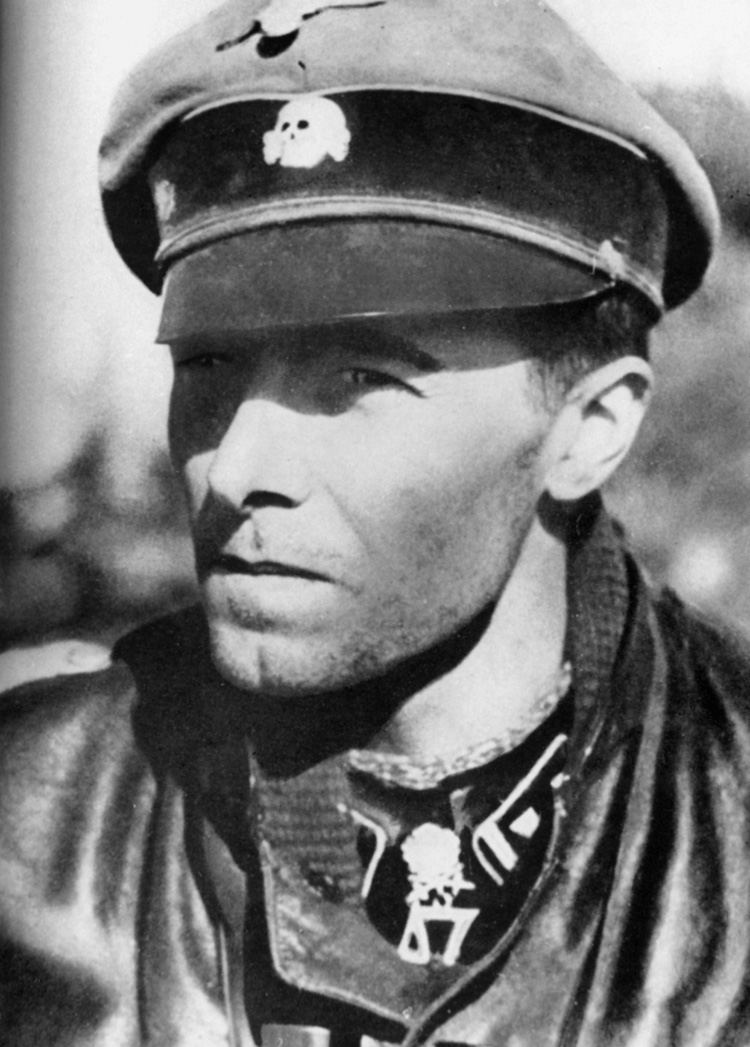
After the war, Peiper said, “I recognize that after the battle of Normandy my unit was composed mainly of young, fanatical soldiers. A good deal of them had lost their parents, their sisters and brothers during the bombing. They had seen for themselves in Köln thousands of mangled corpses after a terror raid had passed. Their hatred for the enemy was such, I swear it, I could not always keep it under control.”
By Sunday evening, Peiper was near Stavelot. He was confident of reaching the River Meuse the following day. General Courtney Hodges, commander of the U.S. First Army, had good reason to be concerned. Peiper’s advancing task force was about 18 kilometers southwest of the Hotel Britannique in Spa, which served as his headquarters. Between Spa and Stavelot lay two major Allied supply depots containing one of the greatest concentrations of gasoline on the Continent. Depots No. 2 and No. 3 contained more than three million gallons of motor fuel, enough to power Peiper’s panzers all the way to Antwerp.
A task force led by Major Paul Solis was sent to Stavelot to assist Captain Lloyd Sheetz of the 291st Combat Engineer Battalion in establishing roadblocks near the Ambléve River. By 3:45 am on Monday, December 18, elements of the 526th Armored Infantry and 825th Tank Destroyer Battalions had passed near the fuel depots and arrived in Stavelot.
Captain Charles Mitchell, commander of the 526th Armored Infantry Battalion, remembers, “Major Solis, Captain Sheetz, Lieutenant Doherty, and I proceeded by jeep to Captain Sheetz’s command post near the bridge crossing the Ambléve River. We discussed the situation, and Major Solis ordered my company to defend the bridge…. I was not informed, nor was I aware that the bridge was supposed to have been mined for detonation.” Company C of the 202nd Engineers had quit guarding it before midnight.
At 4:30 am on Monday, Mitchell ordered his 2nd and 3rd Platoons to proceed in their half-tracks across the Ambléve River bridge. The 2nd Platoon, under Lieutenant Harry Willyard, made its way up a hill on a road called the Vieux Chateau and established a roadblock and listening post. The men radioed Captain Mitchell with news of troop movement and the noise of armored vehicles. He then ordered them to return toward the bridge. On the way the men encountered some of Peiper’s panzergrenadiers.
John Sankey, an enlisted man with the 2nd Platoon, recalled, “There was Germans standing at the buildings firing machine guns at each half-track as they went by.” Two half-tracks from the 2nd Platoon were lost, but Willyard managed to lead the rest back across the bridge.
Lieutenant Doherty, commanding the 1st Platoon of A Company’s 825th Tank Destroyer Battalion, sent two gun squads commanded by Sergeants Jack Armstrong and Jonas Whaley with their half-tracks across the bridge. James Hammons, who served under Whaley wrote, “Sergeant Armstrong’s unit was first up the hill and we followed…. In just a few minutes as we reached the top, a flare went up from a trip wire and the Germans opened up with fire power. Our own troops back across the river began to shoot and we were caught in the crossfire. We tried to retreat but the Germans had pulled a tank or an ‘88 in a curve and began to shoot, hitting Sergeant Armstrong’s unit, setting it on fire. We were behind them and trapped so we had to leave our unit for cover. I was handed a 30 caliber M.G. from the pedestal mount and four of us took shelter inside a tin shed. Momentarily, the German infantry came in droves and we ran into a house and upstairs by a window. The only weapon we had was the machine gun and a carbine with the barrel filled with mud. Naturally, we had to hold our fire as we were outnumbered by the Germans. We watched as they used a burp gun to kill Sergeant Armstrong and part of his crew, trying to get out of the burning unit.”
Anthony Calvanese was shot in the left thigh while jumping from the half-track. Fellow squad member Bernard Gallagher was shot and fell on top of him. “He was huge,” remembered Calvanese. “I had to struggle to get out.” Calvanese dashed into the nearest building and propped his leg up on a chair to dress his wound. Outside he saw flames coming from his squad’s half-track.
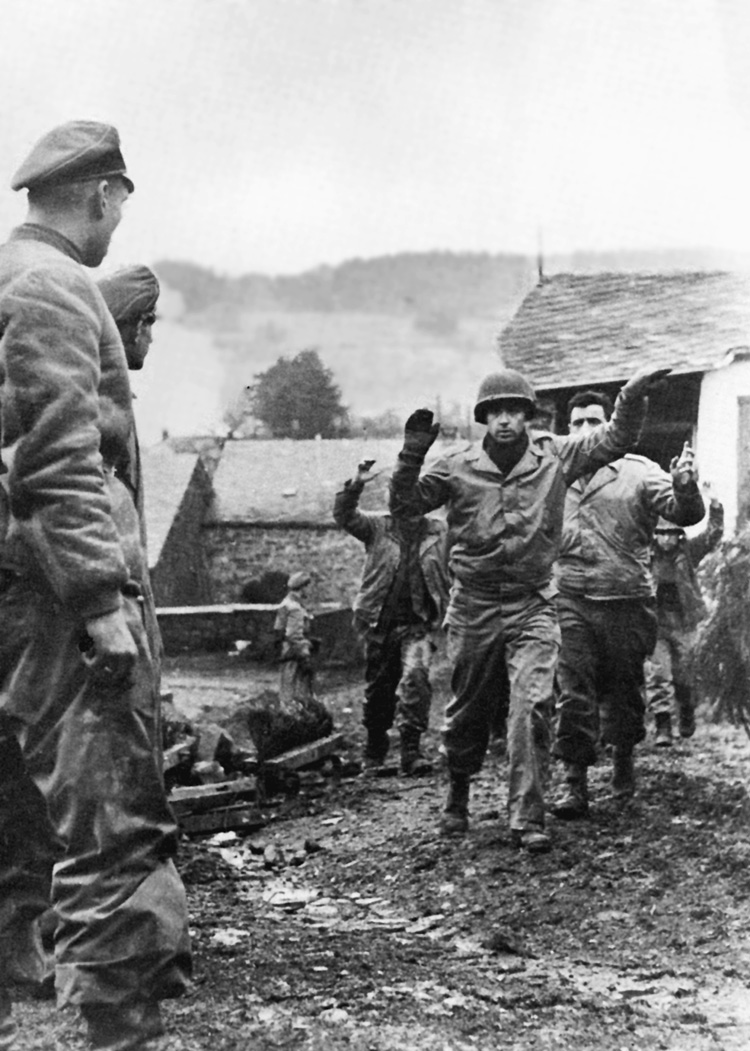
Calvanese would never forget what he saw next. “There was a German officer, he had a long trench coat on … he’s got a gun. He’s pointing it directly at me.” The German fired his Luger, hitting Calvanese in the left ankle.
In desperation, Calvanese looked for an escape. “I tried to go out the side window, I couldn’t; there was a machine gun nest there. I didn’t have a hand grenade or nothing. There was nothing I could do. So I jumped out the back window into a courtyard. I tried to get into the building down below. There were these elderly people, they wouldn’t let me in. They were telling me to get away from there. I could understand that.”
Calvanese was unable to put any weight on his left leg now and began to crawl for his life. “And along came this fellow, Marcel Ozer. He told me to follow him, which I did. I crawled in back of him all the way to the dairy, where they were using it as a shelter for the civilians.” The Belgians tended to his wounds, hiding him from the Germans.
Enlisted men William Kenny, Jim Landgren, and Steve Howell from A Company, 526th Armored Infantry Battalion had crossed the Ambléve River to set up a machine-gun emplacement. “We heard a lot of rifle fire and machine-gun fire,” remembers Kenny. “So we realized real quick that we were in a bad spot. We were between our fellows and the Germans up behind us on the hill.” The trio made their way to the bank of the Ambléve River where Landgren decided to go one direction, Kenny and Howell the other.
To escape the German threat, they were going to have to cross the river. Howell did not take to this idea so well. Kenny remembered, “I said, ‘What’s the matter,’ and he said, ‘I can’t swim.’ Holy gee-wiz, so can you imagine under fire like this giving instructions on how to swim.” The river was frozen about a half-inch thick. “We broke through into the water and swam as far as we could, holding our breath under the ice until our air exhausted. We had to come up and break the ice again to get up to the surface, to get air again.”
Kenny and Howell reunited with their battalion. Jim Landgren, who had taken the alternate route, failed to return to friendly lines and was hidden by a Belgian family and later captured.
In downtown Stavelot things were heating up for the rest of its defenders. “The Germans have a way of scaring you to death before they kill you,” remembered Captain Mitchell. In the wake of a terrifying rocket and mortar assault, Peiper’s infantry force began to charge toward the Ambléve River bridge. “I told the machine gun squads to wait till they got close over on [our] side of the bridge and then open up on them. Then here comes the troops across the bridge. So we could handle that, with the machine guns and my men. We stopped that, right then, and they retreated back across the bridge.”
At about 8 am, Peiper’s tanks began their assault. “I listened and I heard a big rumble and I heard them tanks coming down. I knew we could not handle the tanks!” said Mitchell.
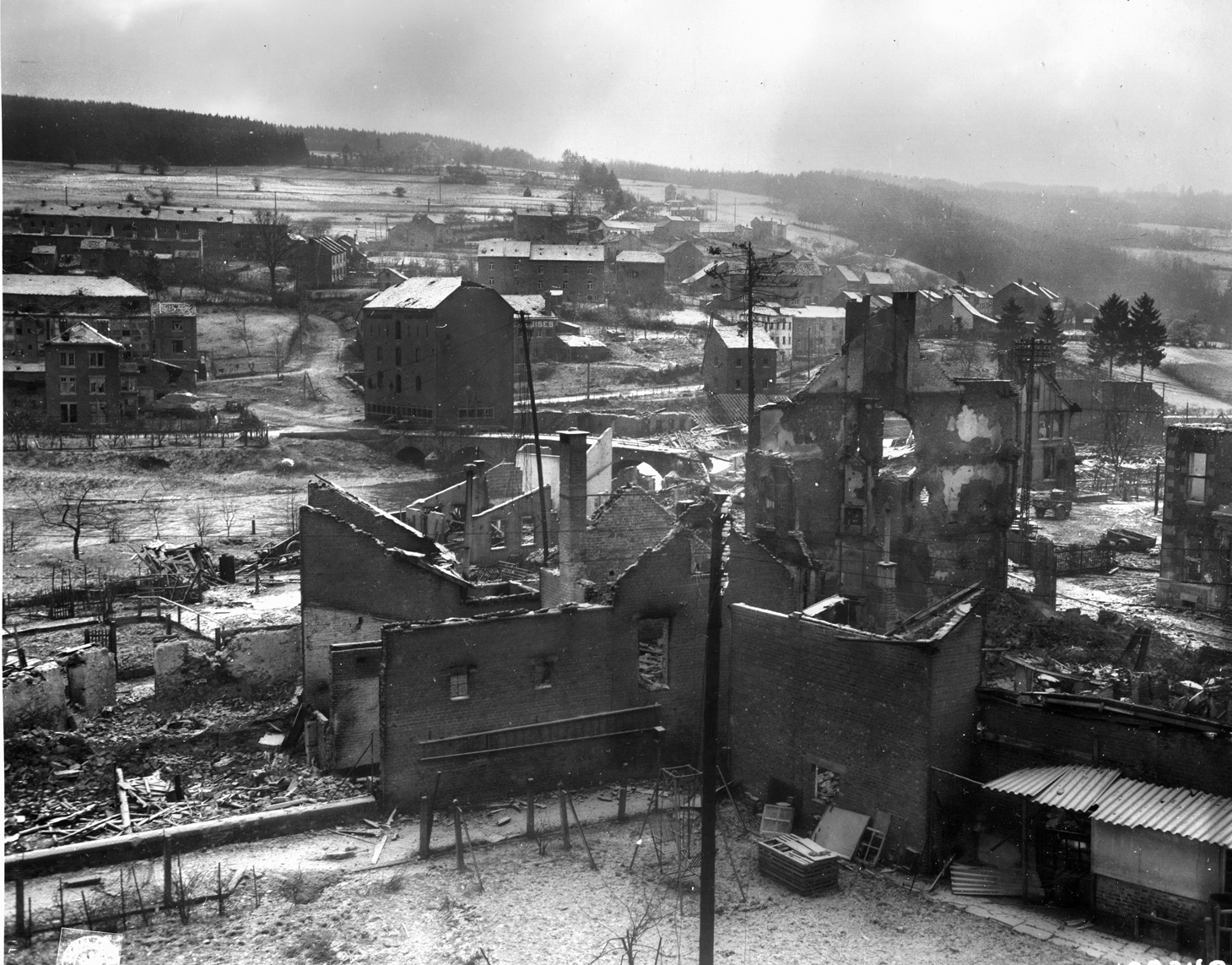
Two 76mm antitank guns under Lieutenant Doherty were moved into position to fire on the German tanks. Sergeant Martin Hauser, commanding one of the gun squads, remembered, “When them tanks started coming down off the hill they scared the hell out of everybody. Seeing them great big monsters, we did the best we could to put them out of business.”
From across the river, Hauser’s squad aimed its gun at the tracks of the enemy tanks, disabling two of them. “And the guys got out of the tanks. We could see them. They jumped up on the roofs of the buildings over there. So we just started peppering the building, started cutting the building down,” he recalled.
Lou Celentano, who commanded the other gun squad, remembered, “We decided to cut down more of the buildings because they seemed to be hiding behind them. We really tore those buildings down. The .50-caliber [mounted on the half-track] did a heck of a job and we were shooting some 3-inch rounds into it and finally cleared it enough so that we started seeing the turrets. Eventually we got so that we had demolished the homes completely and we were able to see the tanks themselves, the entire tanks. So we concentrated on knocking out either the turret or the tracks. The tracks were the best first shot and fortunately we had two great gunners. My gunner was Corporal Roy Ables and Hauser’s was Corporal Paul Lenzo. We managed to stop the first and the last tanks almost immediately…. The second tank was the one that started turning its turret toward us. And I don’t know who hit the turret but he was within a few feet of being able to hit one of us when the turret was stopped and he fired, he actually fired. One shot went completely over our heads…. If he had been able to lower his gun he would have gotten me. I’m almost sure of that. When I say me I’m talking about my crew. But he wasn’t able to get off another shot and that’s when the turret opened up and a man started to climb out.
Celentano continued, “There was smoke coming out of it … out of the hatch…. And by now that’s when [Ben] Bodziner was on the [half-track’s .50-caliber] gun, and unfortunately he froze. It was extremely cold and he had taken off his gloves. His fingers were on the trigger, but he couldn’t move them. And I went up and hit him on the hands to try and wake him up. And one shot went flying. I say one shot because I don’t remember whether there was anything following up on it. And it hit the man coming out of the tank. It hit him square in the center of his forehead.”
With a pair of binoculars, Celentano saw the German fall from the tank. The antitank gun crews continued to load and fire the 76mm shells. Celentano remembered, “We were firing rapid fire and needed a constant supply of shells. The ammo truck was quite a distance from us and the shells we used had to be carried for quite some distance and it was here that a comic relief was added to the horrible scenario of the moment. Lives were being lost and buildings were falling to the ground. While I was giving firing directions to my crew and worrying about the tanks coming down the hill to battle us, yelling above the roar of our fire, out of the corner of my eye I saw a sight that could have been shot in a keystone [Keystone Cops] comedy film. Our ammo was being delivered to us by Jol Torre at 4 feet, 9 inches tall, and his closest friend from their first day in the 825th TD, Alex Aleskavitch. Picture about a 6 foot box weighing at least 80 pounds being carried by a 6-plus footer trying to come down to match a less than 5 footer’s level. This was Hollywood comedy, but I didn’t stop to laugh…. I have no idea how many [shells were fired] but I know there was an awful lot of brass laying on that ground afterwards.”
The shelling took its toll on the German column as witnessed by Karl Wortmann, who commanded a flakpanzer self-propelled antiaircraft vehicle in 10th Company’s Panzer Regiment 1. “It had cost us several panzers and wounded, but the bridge over the Ambléve was open,” he remembered. A Panther tank commanded by Eugene Zimmermann of the 1st SS Panzer Company had been selected by Peiper to lead the attack through Stavelot. In his briefing he was told an American antitank gun would contest his advance.
“Noticing a tank approaching the bridge, I alerted Sergeant Smith of the antitank squad,” recalled Mitchell. “We watched as it slowly crossed the bridge,” he said. “Just as it left the bridge, my antitank gun fired, but unfortunately caused no damage.” Three more shots were fired at the German Panther with no effect before it overran the crew’s position.
Although the Panther had an excellent combination of speed, armor, and firepower, it was the Tiger that gained the reputation as the most feared tank on the battlefield during World War II. As the enemy armor rolled into Stavelot, a Tiger tank turned on the Avenue Ferdinand Nicolay, where Sergeant Martin Hauser’s gun crew was positioned.
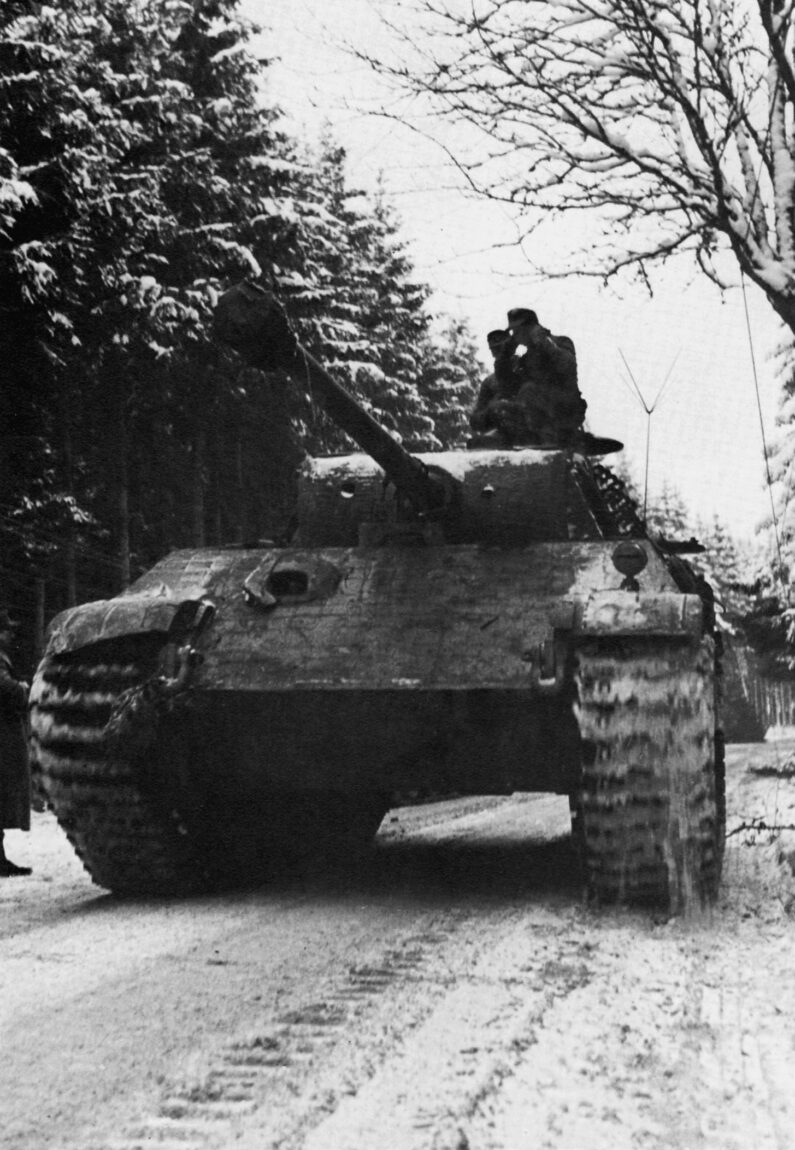
“At first I couldn’t see him go across the bridge but I could hear him coming,” remembers Hauser, “and the first thing I see when he came around the building was that big 88 sticking out there. Then they turned and faced us and we were standing there. We were on one end of the street and they were on the other end and they start firing with their machine guns and that’s when we cut loose with a couple of rounds of our ammunition off our 3-inch gun and we hit him up in the turret.”
Nearby, Lieutenant Doherty and his driver escaped from their jeep just before it was set ablaze by the Tiger’s machine guns. Hauser remembers, “I had my half-track right behind his jeep and if they would have shot in there with an 88 they would have got both of them.”
The massive Tiger backed into a building, sending bricks crashing down upon it, and Hauser witnessed the enemy crew exiting the disabled tank. Hauser and Celentano were awarded the Bronze Star for knocking out or disabling four German tanks. As reported in the newspaper Stars and Stripes, Doherty’s platoon sergeant, Vestor Lowe, remarked, “Hitler would be damned unhappy if he knew that the two guns which caused so much trouble were commanded by an Italian and a German— Celentano and Hauser.”
Peiper’s column continued passing through Stavelot. “My troops did their best as they fought street by street,” recalled Mitchell. Some of the men from his 3rd Platoon withdrew north on the Francorchamps road toward fuel depot No. 3, the smaller of the two depots in the region holding 1,115,000 gallons of 80-octane gasoline. Evacuation of the fuel had already begun. Fearing that German forces were going to seize the fuel, Belgian guards and men from the 3rd Platoon of Mitchell’s company set a section of the depot on fire. Peiper knew nothing of these depots, and as 124,000 gallons of fuel were going up in flames his main column was advancing toward the crucial bridges of Trois Ponts, where the Ambléve meets the Salm River.
As Peiper’s task force lunged for the crossings at Trois Ponts, Company C, 51st Combat Engineer Battalion detonated charges on the key bridges, sending them crashing into the Ambléve and Salm Rivers below. With the favored route now denied, Peiper’s main column detoured northwest to the town of La Gleize and then southwest into the village of Cheneux. With clearing weather, Allied fighter-bombers took to the skies, and as U.S. Republic P-47 Thunderbolts and British Hawker Typhoons struck the German task force, Peiper took cover in an old concrete bunker.
The Germans returned fire with their four-barreled Wirbelwind 20mm antiaircraft guns that were mounted on type IV tank chassis. One P-47 was shot down and eight others damaged. About eight vehicles were hit during the air attack, but the major loss for Peiper was precious time.
The Allied air attack delayed the German advance, providing time for A Company, 291st Engineers to prepare charges on the Neufmoulin bridge. As the lead Panther approached the bridge over the Lienne River, it was blown in their faces. With no other bridges in the vicinity capable of handling the weight of heavy German tanks, Peiper was forced back toward La Gleize. His fuel was critically low, and a number of his tanks ran out of gas. Belgian observers reported 125 German vehicles including 30 tanks passing through the town of Rahier. Peiper spent the night resting in the Chateau Froidcour just east of Stoumont.
Throughout the night of December 18, men from the 119th Infantry Regiment, 3rd Battalion settled into Stoumont. James Pendleton of Headquarters Company recalled, “We just parked our vehicles in the street, went in the buildings, and laid down. We had been on the road for two days and most of two nights. And along about … two o’clock in the morning I was awakened by … Lieutenant Goodman…. He came up and nudged me with his foot and he said, ‘Jim you hear that noise out there?’ And I said, ‘Yes sir, I do. Why don’t those so and so’s lay down and go to sleep?’ And he said, ‘Those so and so’s are German Royal Tigers….’”
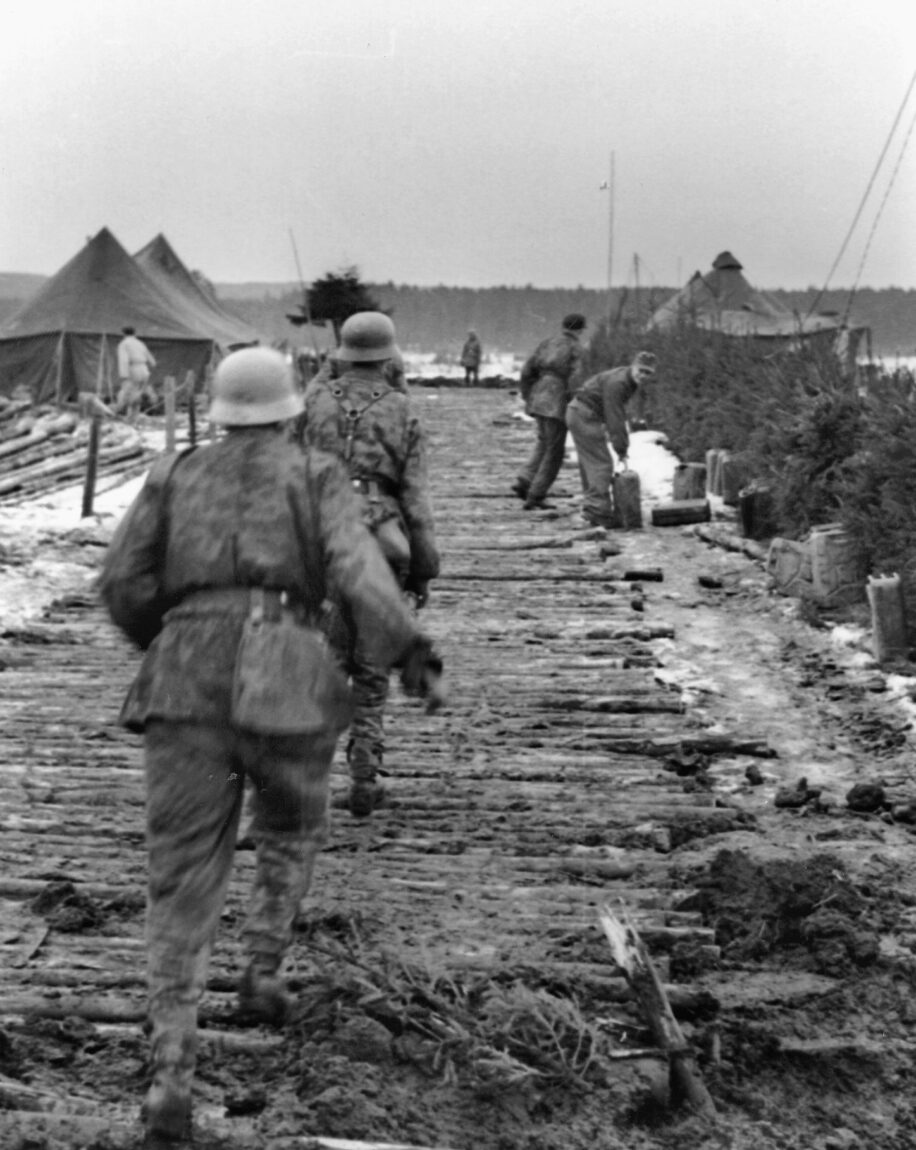
Lieutenant Walter J. Goodman ordered Pendleton and two machine gunners from I Company to prepare a roadblock with antitank mines. Staff Sergeant Walter Kos, 1st Platoon, I Company, received orders from Captain George D. Rehkoph, “There’s somebody out there running around with a lot of tanks and I want you to find them.”
Kos and four others traveled by jeep to the area east of Stoumont. The driver stayed behind while the others proceeded through a wooded area on foot until they came upon the enemy from a concealed position. “They were washing up, eating, making a fire, and changing their clothes,” remembers Kos. “There were 30 … tanks there.” Kos reported the findings to his company commander, who relayed them up the chain of command.
The previous night Robert Hall and two others with Headquarters Company had been ordered by Lieutenant Goodman to set up an observation post on a hilltop overlooking the east side of Stoumont. They found a small farm house, and Hall remembered, “We tried to get a little sleep and then at the break of dawn we look out and here comes the whole German Army, tanks and soldiers…. I ran down into Stoumont and I couldn’t go any further because they were coming right at us. So I went into this house and went down to the cellar. There was 20 to 25 of us soldiers there. I knew they were coming now, so I went to the cellar window and looked out and I could see about 10 feet away an infantry soldier with his rifle.”
Hall, who had received a Silver Star while serving in Normandy, looked around for some place to take cover. Without no other option, Hall and the others surrendered.
Meanwhile, Sergeant Kos and the men were ordered to stall the enemy’s advance into Stoumont. The lieutenant in charge abandoned the platoon. “He had it planned, I think, to get the hell out,” said Kos. “He knew that place was hot and I did too. We were in front for a delaying action.” Over the radio Kos remembered Captain Rehkopf informing him, “Don’t forget now, you’re in charge…. If you get out of this, I’ll make sure you have your own platoon.”
For the actions that followed, Kos would be decorated with a Silver Star, undergo five back surgeries, and receive decades of psychiatric treatment.
When German tanks approached the 3rd Platoon’s position, Kos helped direct the fire of two Sherman tanks from C Company, 743rd Tank Battalion. He gave the signal as soon as the lead German tank was about to come around a corner.
“So the two Shermans fired at the lead tank, knocked the track off of it and damaged the turret,” said Kos. Gallantly moving through a murderous hail of machine-gun, small-arms, and tank fire, Kos continued directing fire that destroyed two enemy half-tracks. The heroic action delayed the enemy long enough for a new defensive line to be established.
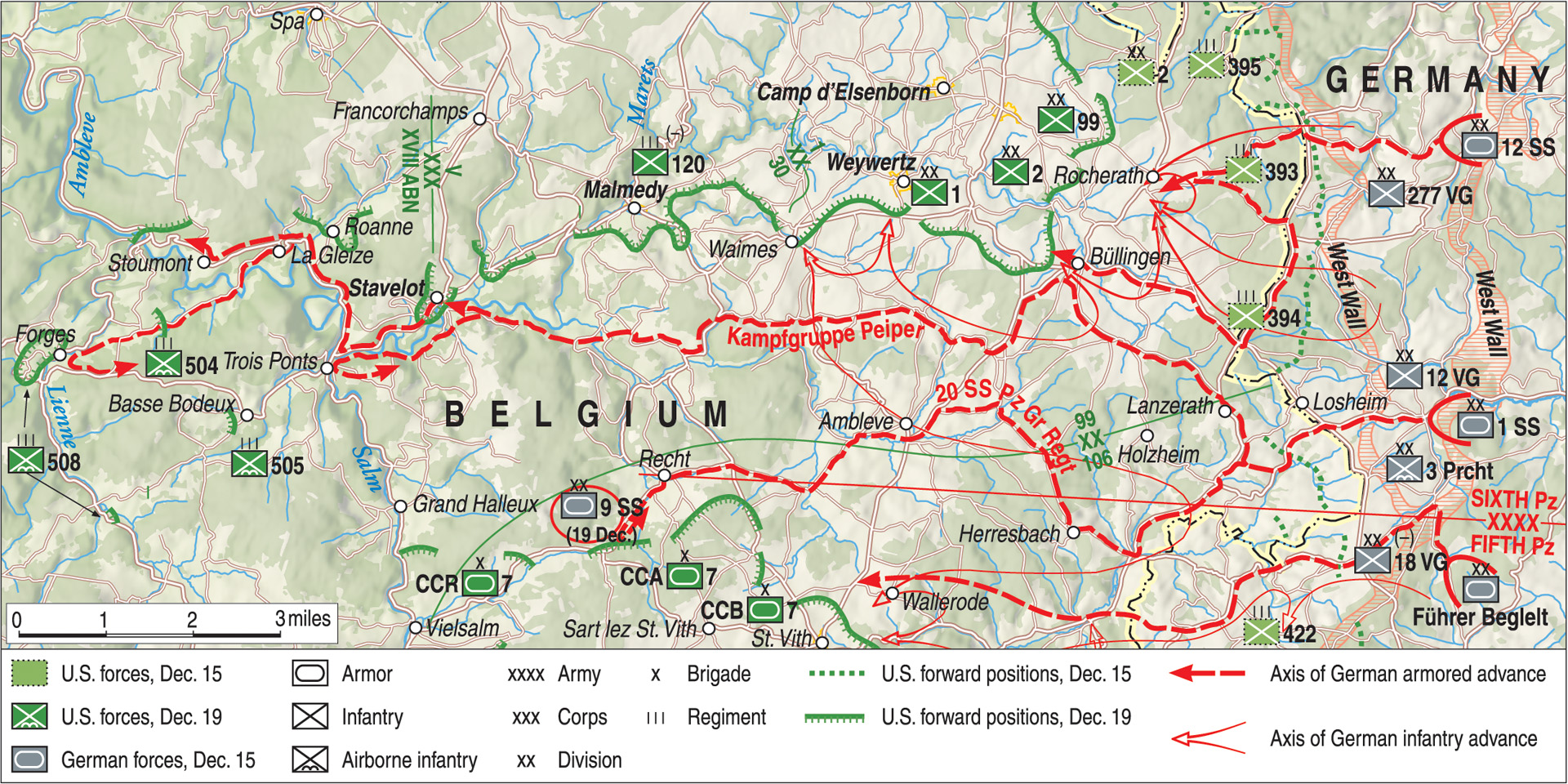
When an advancing enemy tank rammed its own disabled tank off the road, Kos’s position was jeopardized. He recalled, “That’s when they started coming after us. We were fighting them house to house and then I got separated from the other guys.”
Kos ducked into one of the houses and went upstairs. “I could see the tank and six Germans, six SS guys coming down the road,” he said. “I knew that if I shot a couple of them, which I could of, that they were going to get me anyway.” When one of the SS troopers came to the front door of the house, Kos decided to escape out the back window of the second floor. The SS trooper threw a grenade into the room, and as Kos opened the window the blast sent him flying to the ground below.
Kos landed on his back hard, but with adrenaline masking the pain he ran into a nearby house. Inside about a dozen men from 3rd Platoon were hiding from the enemy. As the German tank approached, the men decided to run for it. Kos remembers. “The guys started crossing the road. The Germans were picking them off left and right. They wanted to escape. They heard about … the massacre at Malmedy. So they figured they didn’t want to get shot…. But they had that road zeroed in, I told them don’t go, don’t cross that road…. So they start crossing it. Jeez! They were getting shot and we tried to pull them back in. They were wounded. We couldn’t, because as soon as you went out there, hell … they were shooting and their Tiger was coming down.”
The German tank stopped outside the house and an SS trooper called out in German, “You’re surrounded.”
Kos remembered, “We knew what the hell that meant—put your hands on your head—so we came out. They lined us up and they start marching us to the rear and they were kicking us, gave us all a whack. As they were marching us up the German troops start coming in. Everybody took a whack at us, oh with the guns and every damn thing, my neck, my back.”
As German tanks in Peiper’s column forced their way through the streets of Stoumont, James Pendleton of Headquarters Company placed his allotted antitank mines in the path of the oncoming enemy. He saw a German tank run over one of the mines and burst into flames.
“I had two I Company machine gunners with me,” Pendleton said. “I had a guy from Hagerstown, Maryland, by the name of Red Aldrich and also a guy from Memphis, Tennessee … we called him Memphis, that’s the only nickname I knew him by.”
When the Germans opened their hatches in an attempt to escape the burning tank, Aldrich and Memphis “took care of them as they crawled out….” With the onslaught of German tanks and infantry pouring into Stoumont, the men were soon forced to take cover in a storeroom with a large front window.
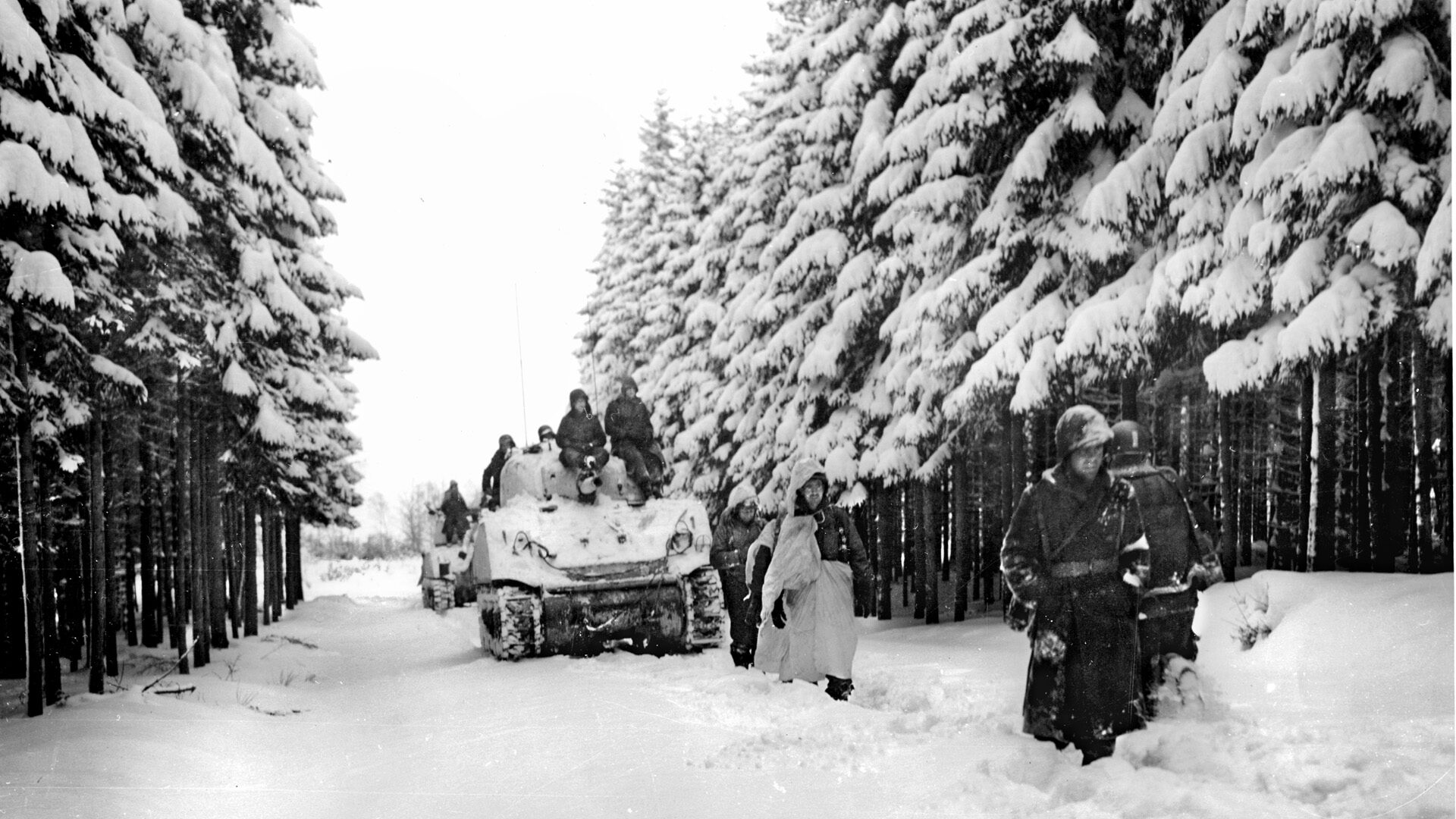
“A German tank rolled up and stuck the barrel of the 88 through the glass front,” recalled Pendleton. “And a guy raised the turret and a German said, he had on a G.I. uniform, ‘You give up, or you want me to blast you.’ And I said, ‘Well, I’ll give up.’ And the jeep was parked at a side door. So we had to come out the side door anyway and the jeep was sitting there idling. And I told the guys, I said, ‘I’ll drive it. You guys ride it.’ The two guys that were with me, Aldrich and Garrison, they filed in the back of the jeep and I jumped in the driver’s side.”
Pendleton sped off in a desperate attempt to put as much distance between the jeep and the German tank as possible. He recalled, “Well this tank, he backed out and he started shooting point-blank, 88 shells at us. And I got down the road about 50 feet and there sat a German half-track with twin mounted 20s on it. And as I passed him, he shot down on the side of me and I pulled the jeep from second gear down to high gear and that time the shell hit my right arm.”
The antiaircraft shell took off about four inches of the radius and ulna bones near the elbow of Pendleton’s forearm. The jeep lost control as it neared a curve in the road and flipped over, throwing its occupants through the air. Aldrich and Memphis scrambled to their feet and managed to take cover behind some bushes.
“It was humanly impossible to get out of the situation I was in after I was shot,” said Pendleton. “I said, ‘Lord if you won’t save my body, save my soul,’ and that gave me courage…. Well, I get on my feet and there was a building next door and I ran in that door. The room was full of Germans…. And a big red-headed German stuck a burp gun in my face and I grabbed it with my left hand and shoved it away and he either fired it empty or it jammed. I don’t know which and when it quit I sailed out the door again. But the street was moving with tracers. You could see it, just like sheet metal moving down the street. Anyhow there was a wireman nearby by the name of Joe Duval. He was from Indiana and he stopped just a second and cut my sleeve off and tied a tourniquet on me and on he went. I stood there and I was getting weak. There was no place to go.”
German vehicles and infantry continued through Stoumont. Pendleton leaned against a building to rest and gazed at the street corner where his jeep had overturned. Aldrich and Memphis were nowhere to be seen. Then from around the corner a Sherman tank appeared and fired its gun. The Sherman withdrew and then reappeared to fire again. It continued this strategy for some time, and finally Pendleton was able to attract the tank crew’s attention by leaping out in the middle of the street.
Pendleton yelled, “Come and get me, I’m an American!” The tank fired and then withdrew again. When it returned one of the tankers yelled from an open hatch, “We can’t get you in, but we can get you on the left side of the road if you could ride the barrel out. When I rev it three times you’ll know I’m coming all the way.”
The tank continued to maneuver from around the corner. Upon hearing the Sherman’s engine rev three times, Pendleton moved to the location as instructed, and when the tank reappeared the barrel was positioned for him to grab.
“I hooked my left arm and grabbed a hold of my belt and he rode me back around the curve,” says Pendleton. “I was suspended in the air on the opposite side of the road from where the Germans were. They sandblasted the tank…. They shot all the paint off of it.” With exhaustion setting in, Pendleton’s grip around the barrel loosened, and he fell to the ground, nearly being crushed by the tank that had just saved his life. The 119th Infantry Regiment’s 3rd Battalion suffered 267 casualties defending Stoumont. Most of the 152 left behind to cover the battalion’s withdrawal were captured.
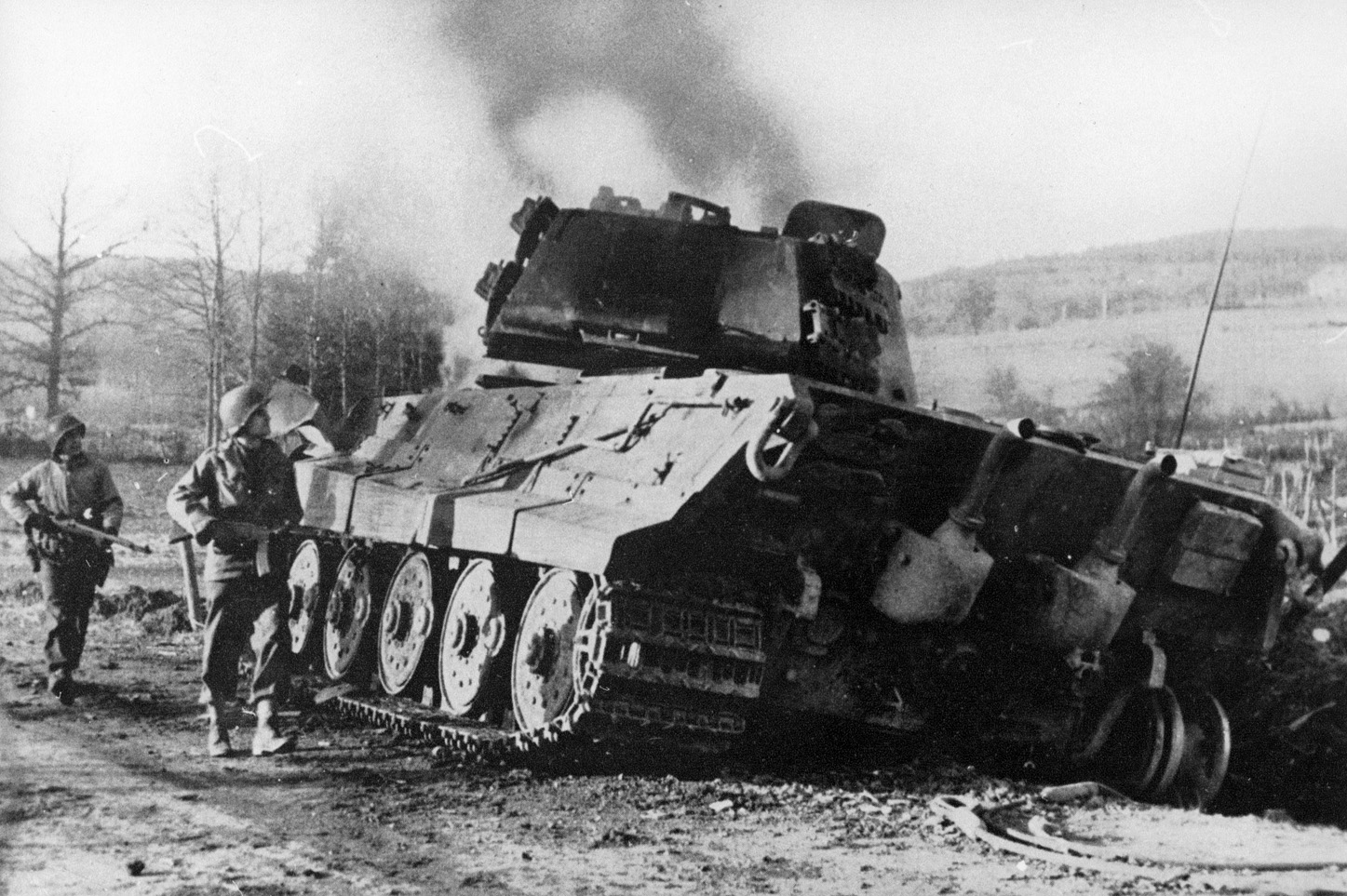
Peiper sent a small probing force west past the hamlet of Targnon until three of the leading Panthers were destroyed. By Tuesday, December 19, his task force had advanced over 100 kilometers, farther than any other German unit. However, supply shortages, particularly fuel, were becoming critical. “We began to realize,” he said, “that we had insufficient gasoline to cross the bridge west of Stoumont.”
In an ironic twist of fate, that very afternoon one of Peiper’s reconnaissance groups probing a secondary road from La Gleize to Spa had narrowly missed 2,226,000 gallons of gasoline. To prevent fuel depot No. 2 from falling into German hands, a minefield had hastily been laid and Headquarters Company of the U.S. 9th Armored Group had been ordered to provide a radio security net for the First Army.
When radio net officer 1st Lt. Walter R. Butts heard enemy activity in the area he requested additional support. The 110th Antiaircraft Artillery Battalion sent in two 90mm antiaircraft guns and four M-51 quadruple .50-caliber machine guns. Peiper’s reconnaissance group of two armored cars, two trucks, and two self-propelled 88mm guns reached a point about a mile north of Cour, near the southern edge of the minefield. Two Germans got out of the leading armored car and walked to the minefield.
An American opened up with a .50-caliber machine gun, and the Germans immediately returned fire, killing the gunner. Then all the machine guns opened up while other Americans let loose with small arms fire.
“Jerry must have thought he hit a regiment,” Butts said. “I don’t know how much damage we did; we made a hell of a lot of noise. After 10 minutes, the [German] column pulled out….”
By Wednesday, December 20, Peiper faced his enemy on three fronts. Throughout the day and into the night the main concentration of his forces, spread through Stoumont, Cheneux, and La Gleize, fought off elements of the U.S. 30th Infantry, 82nd Airborne, and 3rd Armored Divisions. Three separate task forces from the 3rd Armored Division’s Combat Command B were involved. Task Force Lovelady was given the important job of cutting off the Stavelot-Stoumont road to prevent supplies from getting to Peiper. Task Force Jordan made a thrust toward Stoumont and was beaten back when two American tanks leading the column were knocked out.
Task Force McGeorge attempted to advance into the northeastern outskirts of La Gleize. Charles Ley, a loader in a Sherman tank with I Company of the 33rd Armor Regiment recalled, “We were at the crest of the hill … waiting for our armored infantry to come up…. It was so foggy down below, you couldn’t see anything…. All of a sudden the Lieutenant gets on the horn and says, ‘Okay fellows button up, prepare to fight…. We got up to the corner and the road turned to the right leading into the town. Our lead tank got hit and knocked out and that was the end of our push up that hill.”
When the fog lifted for a short time a German knocked out another Sherman commanded by Lieutenant Wanamaker. When the Sherman advance toward La Gleize stalled, the infantry continued. “We got the daylights kicked out of us, boy we ran into an ambush,” remembers Robert Kauffman who served in D Company, 36th Armored Infantry Battalion. Under the cover of darkness, the men crossed a small narrow bridge and then made their way up a hill.
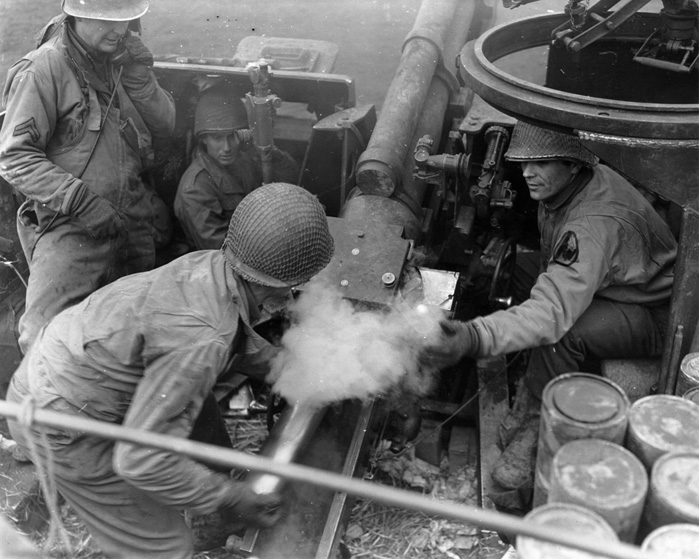
Kauffman recalled, “We had just crossed over a brook, and when we heard the bolt of a machine gun being put into the firing position everybody hit the ground. All of a sudden there was firing all over the place, and they were dropping grenades in on us. Fortunately, the machine gun had been preset to fire on the bridge and that’s where the fire was going, the bridge that we had crossed. We were all, of course, flattened out, and then they were yelling at us to surrender. That becomes very disconcerting when the enemy starts yelling at you, and word was passed up the line that we should pull back. One of our guys crawled in the wrong direction, and he was captured. I don’t know why he did that, but anyway we had to cross this little stream and there was a barbed wire fence that went … parallel with the stream. It was too low to go under it, too high to go over it. So the guy that was behind me became impatient, and he literally pushed me over the barbed wire across to the other side of the brook.”
With intense fire still coming from the Germans, Kauffman began to crawl down the hill. “I was passing guys lying there, and I was sure they were dead,” said Kauffman. When he was out of the trajectory of fire, he got up. “Finally there was another guy and I ; we made it down the hill, but we couldn’t use the bridge to get out of there. We had to ford the stream that the bridge ran over, and this is December you know so it was pretty chilly water. I seen a lot of the guys come through the stream, but I don’t know how many got off the hill.”
Fighting on three sides, Peiper’s task force was considerably weakened. By Thursday, December 21, Peiper consolidated his forces to the more easily defendable hilltop village of La Gleize. Task Force McGeorge continued to press an attack on the village, making little headway. To avoid the tragedy of forcing Sherman tanks into La Gleize, where the heavy German tanks waited, the Americans relied on artillery. An intense artillery barrage blanketed the town as Peiper established his command center in the cellar of a large house.
Major Hal McCown, the commander of the 2nd Battalion, 119th Infantry Regiment, had been taken prisoner. He met with Peiper in his command and later wrote, “I have met few men who impressed me in as short a span of time as did this German officer…. He was completely confident of Germany’s ability to whip the Allies. He spoke of [SS Reichsführer Heinrich] Himmler’s new reserve army at quite some length, saying that it contained so many new divisions, both armored and otherwise, that our G-2s would wonder where they all came from. He did his best to find out from me of the success the V-1 and V-2 were having and told me that more secret weapons like those would be unloosed…. The German Air Force, he said, would now come forth with many new types and which—although inferior in number to the Allies—would be superior in quality and would suffice their needs to cover their breakthrough in Belgium and Holland and later to the French coast.”
At 5 am on Friday, December 22, following a six-hour meeting with Peiper, Major McCown was taken to a cellar with four other American officers. He vividly remembered, “All that day American artillery pounded the town incessantly, even the guard detachment—consisting of 5 Germans—came down into our cellar with us, which was heavily overcrowding the tiny room. In the afternoon a 105 shell made a direct hit on the wall of our cellar, throwing the German sitting beside me half-way across the room. A hole approximately 2½ feet in diameter was knocked in the wall. Lieutenant Henley and Lieutenant Youmans of my regiment helped pull the German out from under the rubble and got him on the floor of the undamaged part of the cellar. Within a few minutes another shell landed a few feet outside the hole in the cellar wall, and shrapnel and stone flew through the room. Lieutenant Henley was killed instantly, and three Germans were wounded. One of the Germans died within about 30 minutes. We administered first aid as well as we could. For several hours then the shelling continued without appreciable letup, and the dead and wounded together with those who were unhurt were cramped close together in the unharmed half of the small cellar.”
Late in the afternoon, parties of American enlisted men came to the cellar and removed the dead and wounded; the litter bearers told me that German casualties had been heavy throughout the town.
The Germans engineered the most powerful tanks of World War II, but without the fuel to run them they were useless. Between 2 and 3 am on Sunday, December 24, Peiper and about 800 of his unwounded men walked out of La Gleize. Most of the vehicles they left behind were out of fuel.
On Christmas Day, elements of the 740th Tank Battalion recovered an unwrapped gift, a Tiger II left behind by the 3rd Company of Peiper’s 501st SS Heavy Tank Battalion. It was shipped to the United States and examined at Maryland’s Aberdeen Proving Grounds. The tank was later displayed at the Patton Museum in Fort Knox, Kentucky, and now rests in a warehouse at Fort Benning, Georgia.
Author Josh Quackenbush is a writer and educator residing in Cary, North Carolina. He conducted extensive research, including more than 140 interviews with veterans, to produce this story.
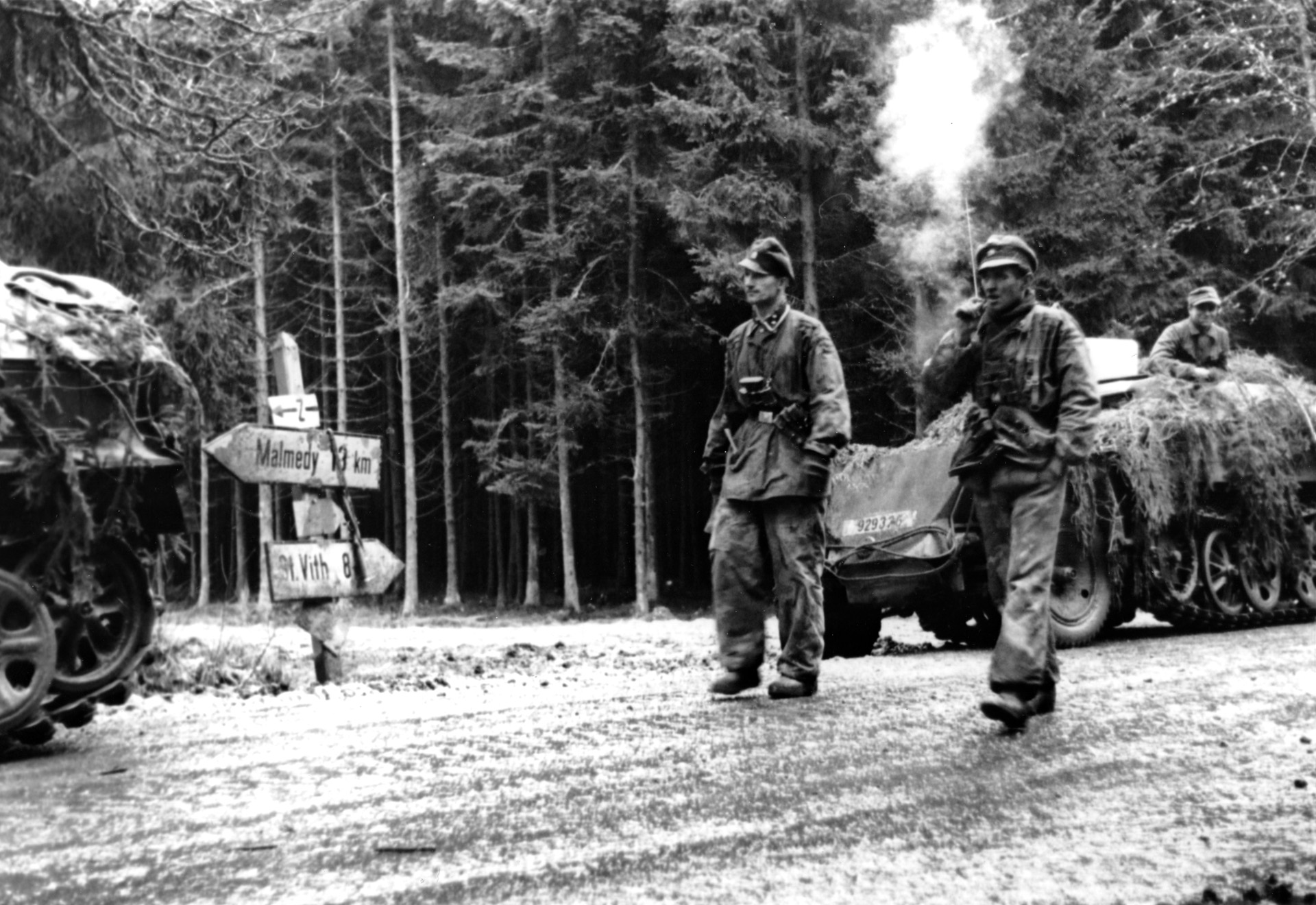
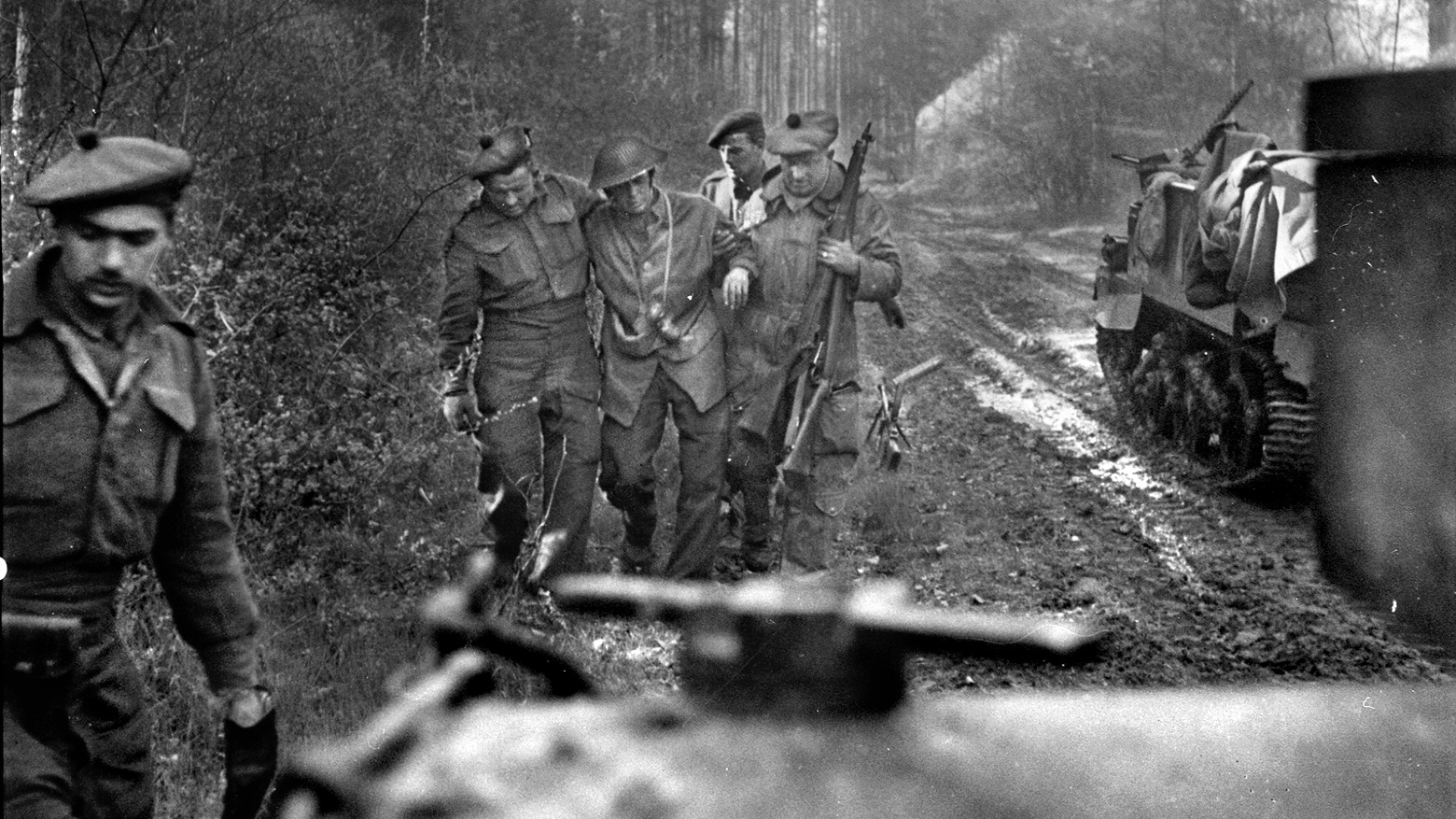
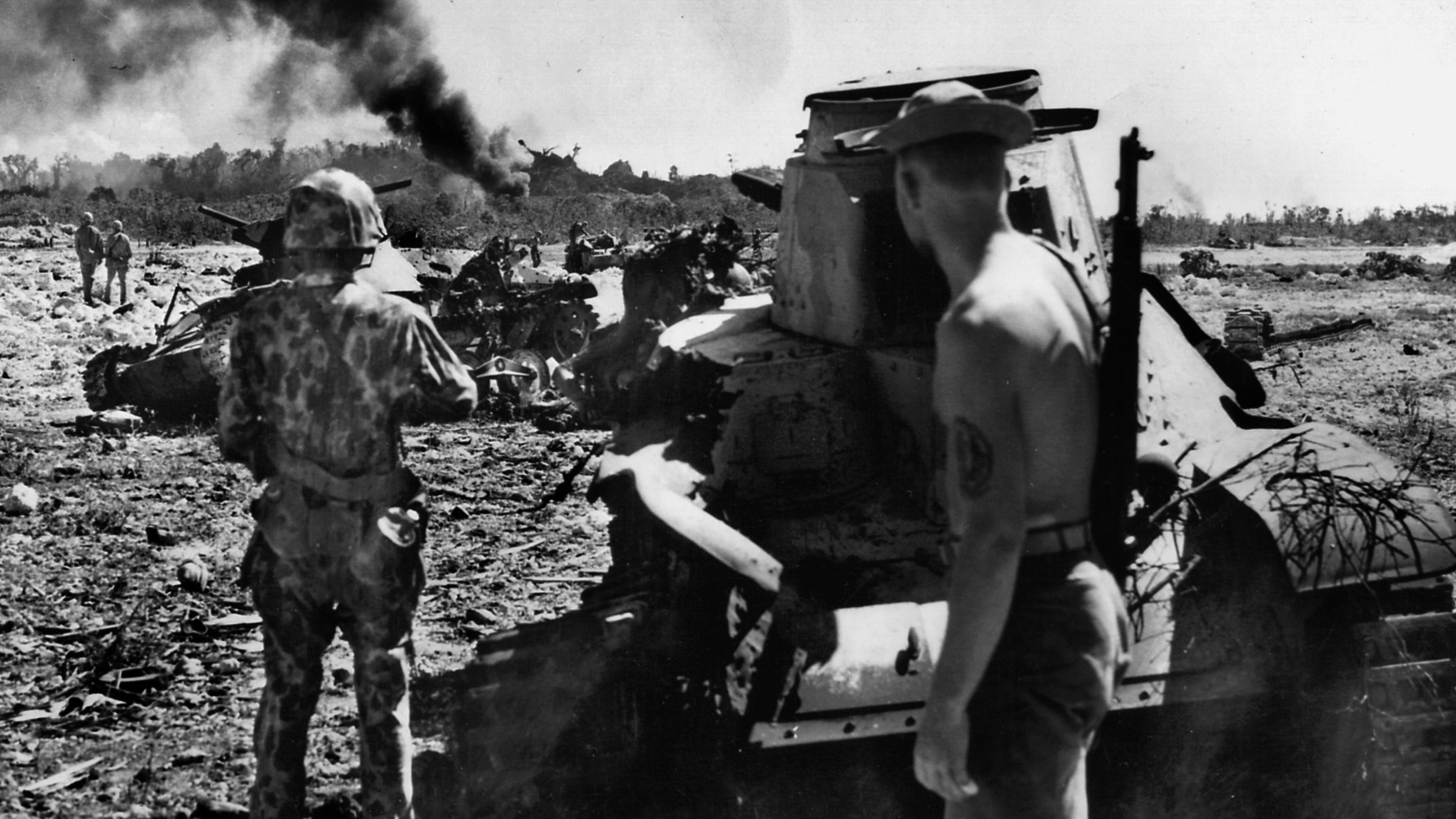
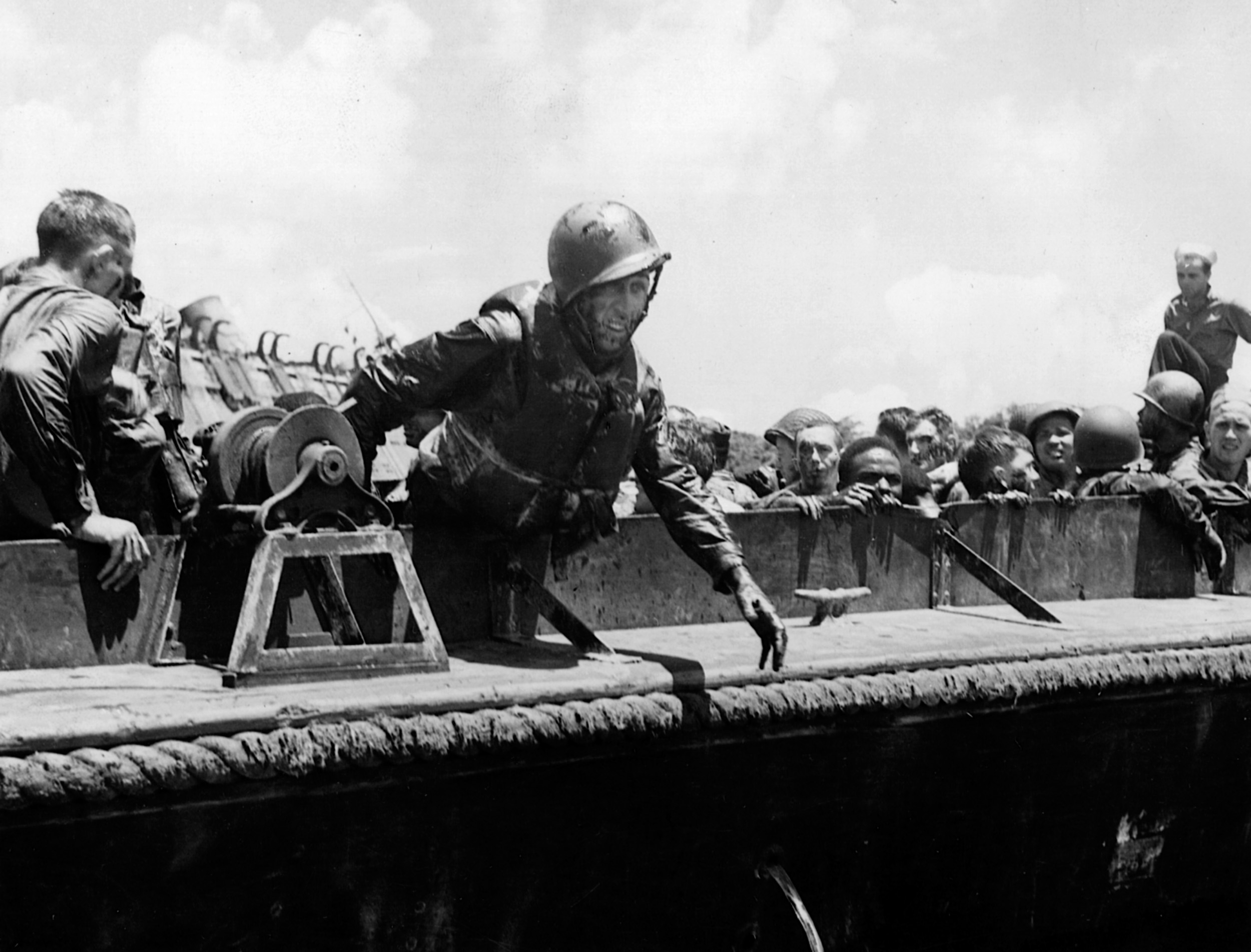
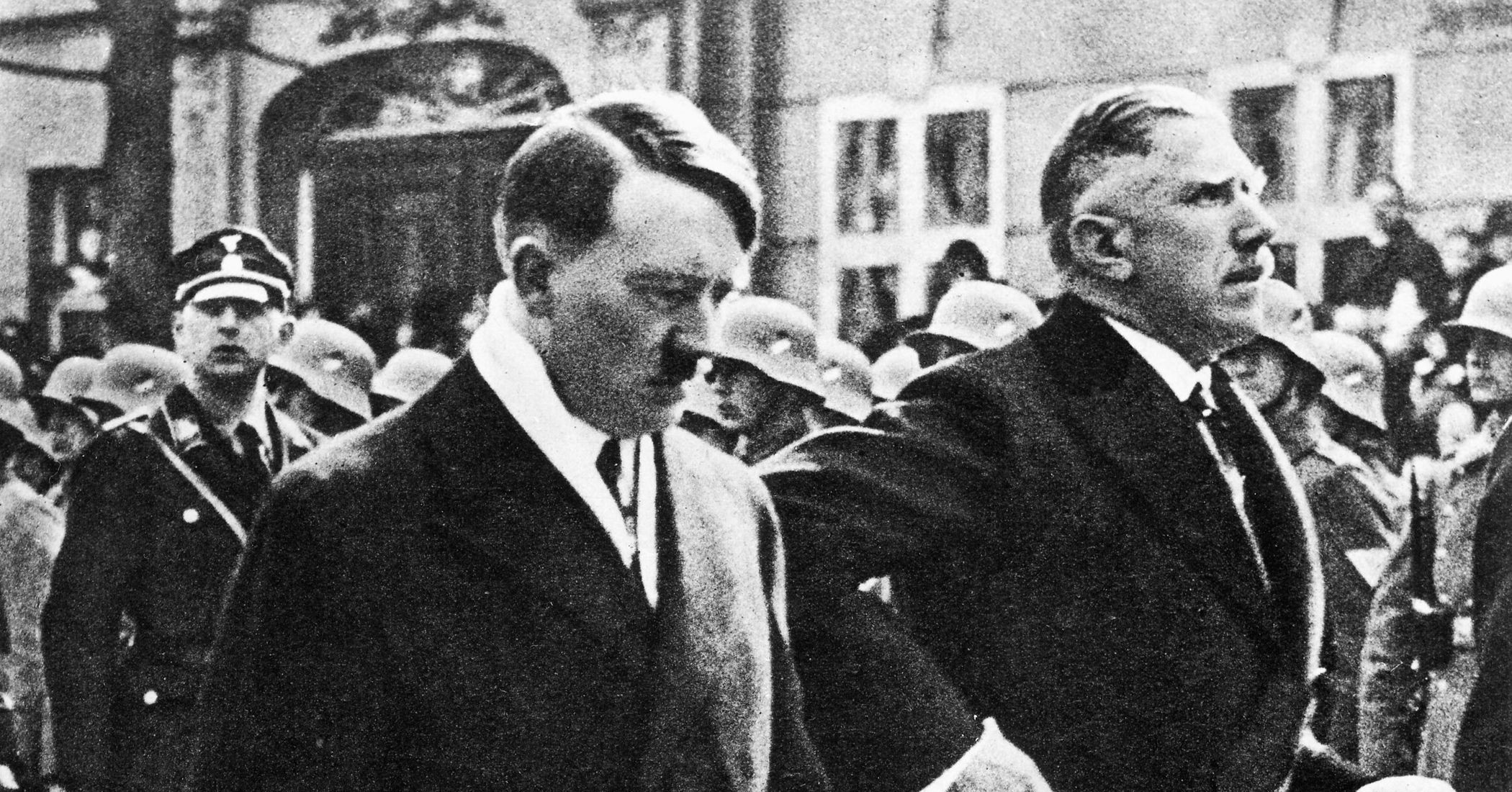
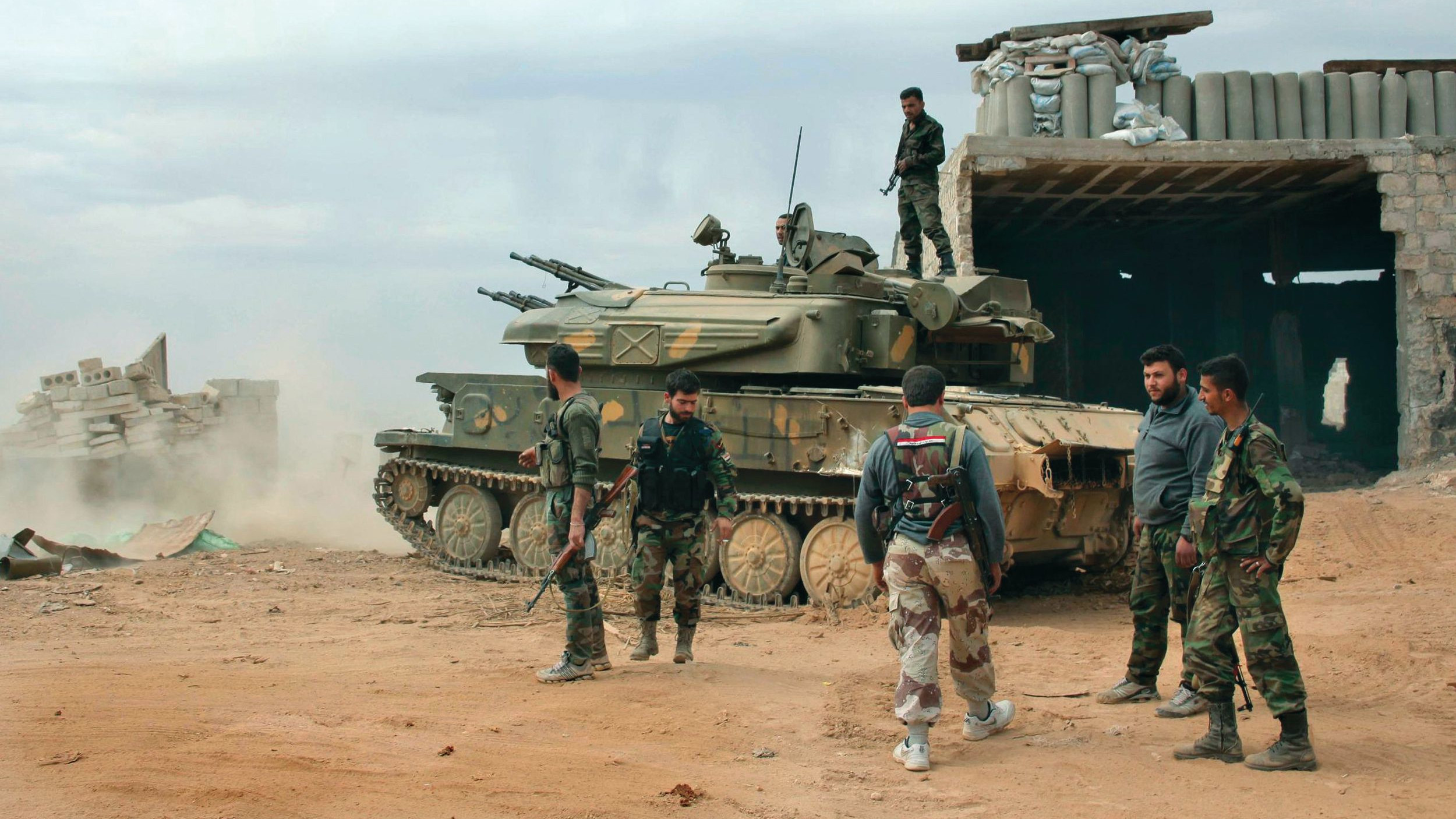
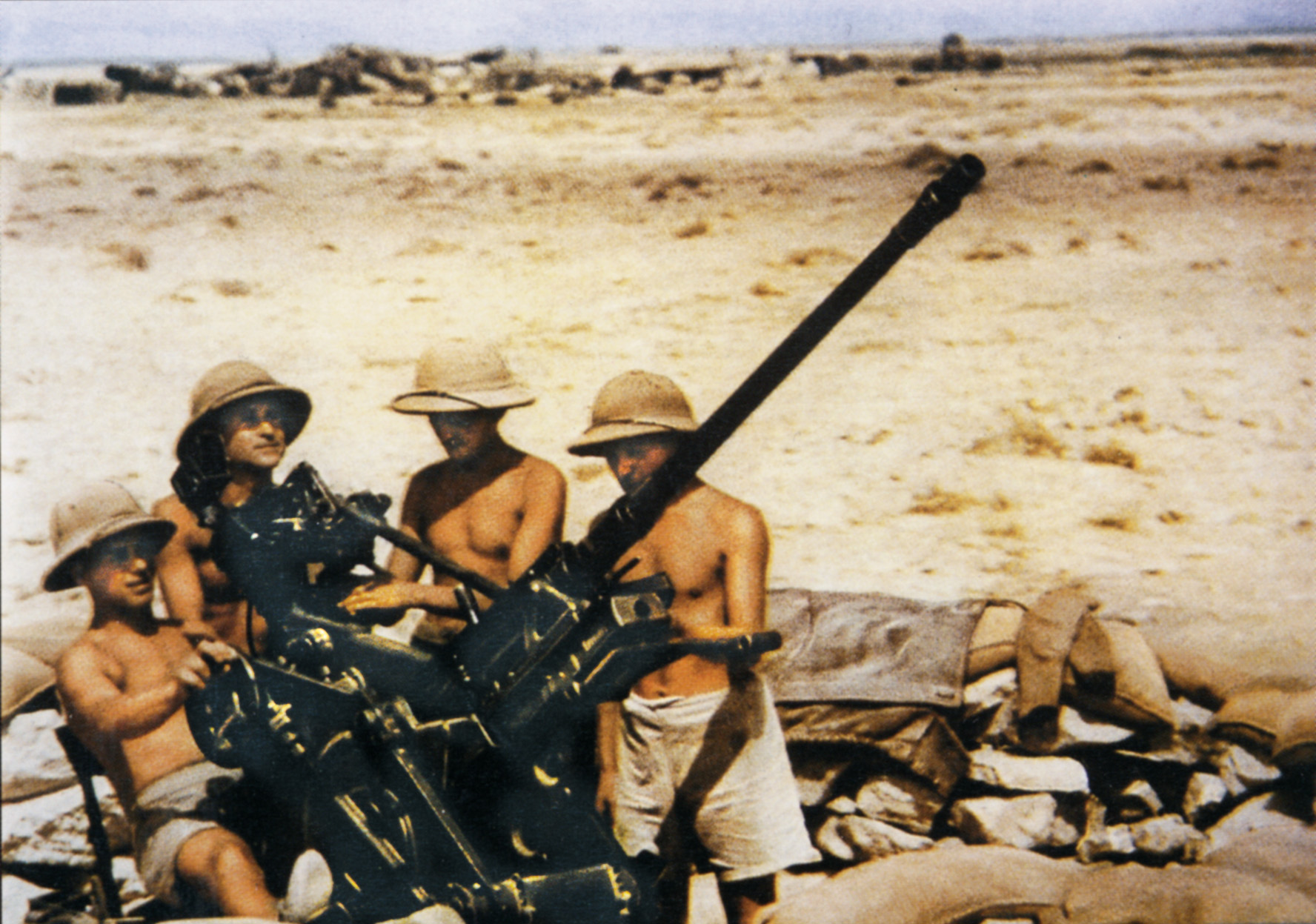

Excellent. All the research really shows. Well done.